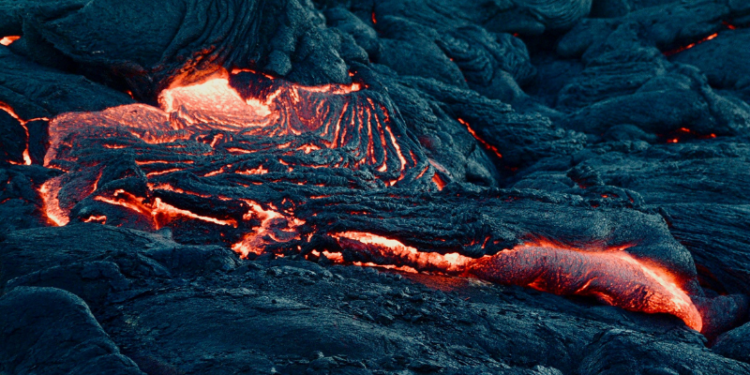On Wednesday, November 20th, a volcano on Iceland’s Reykjanes Peninsula erupted for the seventh time in a year, displacing residents and threatening local infrastructure. The eruption began just before midnight, producing a fissure approximately 3 kilometers long. This event follows a series of eruptions in the region, underscoring Iceland’s geological volatility as it sits on the tectonic boundary between North America and Europe.
Residents of Grindavík, a town about 30 miles south of Reykjavík, were evacuated alongside visitors at the nearby Blue Lagoon spa and adjacent hotels. Emergency crews secured the area as lava covered parts of a parking lot and endangered a pipeline essential to geothermal energy distribution. The Icelandic Meteorological Office reported that the lava spread over 7 square kilometers, although the fissure’s activity had begun to stabilize by Thursday morning.
Despite the eruption’s intensity, it was less severe than the August 2024 eruption, which involved a longer fissure and resulted in significant seismic activity. Officials confirmed that Grindavíkwas not directly in the path of the lava, and flights to and from Iceland were unaffected. The ongoing volcanic activity highlights the challenges of managing safety and infrastructure in one of the world’s most active volcanic regions.
The eruption prompted evacuations for approximately 60 people, including local residents and staff at the Blue Lagoon and Svartsengi Power Plant. This geothermal spa, a popular tourist destination, has faced repeated disruptions from volcanic events over the past year. Aerial footage from Iceland’s national broadcaster showcased the eruption’s fiery streams and plumes of smoke, offering a stark reminder of the power of nature.
Seismologists linked the eruption to recent earthquakes that caused the ground to split, a phenomenon common in this geologically active region. Iceland has seen 10 eruptions on the Reykjanes Peninsula since January 2020, marking a significant increase in activity after centuries of dormancy.
While this eruption posed no immediate threat to Iceland’s capital, it underscores the need for continuous monitoring and preparedness. The Icelandic government and scientific community remain vigilant as they navigate the challenges posed by living on the edge of two tectonic plates.










